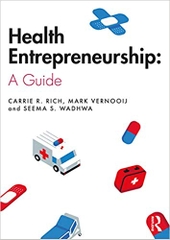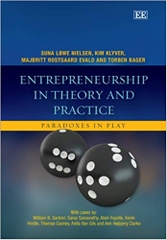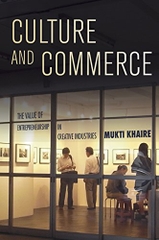-
-
-
Tổng tiền thanh toán:
-
-
Thông tin
-
Tìm sách theo yêu cầu
You have a new venture in mind. And you've crafted a business plan so detailed it's a work of art. Don't get too attached to it.
As John Mullins and Randy Komisar explain in Getting to Plan B, new businesses are fraught with uncertainty. To succeed, you must change the plan in real time as the inevitable challenges arise. In fact, studies show that entrepreneurs who stick slavishly to their Plan A stand a greater chance of failing-and that many successful businesses barely resemble their founders' original idea.
The authors provide a rigorous process for stress testing your Plan A and determining how to alter it so your business makes money, solves customers' needs, and endures. You'll discover strategies for:
-Identifying the leap-of-faith assumptions hidden in your plan
-Testing those assumptions and unearthing why the plan might not work
-Reconfiguring the five components of your business model-revenue model, gross margin model, operating model, working capital model, and investment model-to create a sounder Plan B.
Filled with success stories and cautionary tales, this book offers real cases illustrating the authors' unique process. Whether your idea is for a start-up or a new business unit within your organization, Getting to Plan B contains the road map you need to reach success.
- Link: http://www.amazon.com/Getting-Plan-Breaking-Through-Business/dp/1422126692
As John Mullins and Randy Komisar explain in Getting to Plan B, new businesses are fraught with uncertainty. To succeed, you must change the plan in real time as the inevitable challenges arise. In fact, studies show that entrepreneurs who stick slavishly to their Plan A stand a greater chance of failing-and that many successful businesses barely resemble their founders' original idea.
The authors provide a rigorous process for stress testing your Plan A and determining how to alter it so your business makes money, solves customers' needs, and endures. You'll discover strategies for:
-Identifying the leap-of-faith assumptions hidden in your plan
-Testing those assumptions and unearthing why the plan might not work
-Reconfiguring the five components of your business model-revenue model, gross margin model, operating model, working capital model, and investment model-to create a sounder Plan B.
Filled with success stories and cautionary tales, this book offers real cases illustrating the authors' unique process. Whether your idea is for a start-up or a new business unit within your organization, Getting to Plan B contains the road map you need to reach success.
Product Details
- Hardcover: 272 pages
- Publisher: Harvard Business Review Press; 7.2.2009 edition (September 1, 2009)
- Language: English
- ISBN-10: 1422126692
- ISBN-13: 978-1422126691
- Product Dimensions: 9.3 x 6.4 x 0.9 inches
- Shipping Weight: 1 pounds (View shipping rates and policies)
- Average Customer Review: 4.3 out of 5 stars See all reviews (42 customer reviews)
- Amazon Best Sellers Rank: #145,070 in Books (See Top 100 in Books)
Editorial Reviews
Review
“...it is both a handbook for those already on the way to building a successful business as well as encouraging others to think they could do it.” - The Financial Times, September 30, 2009
From the Back Cover
“This is a fantastic book. The stories are excellent . . . deep and insightful . . . and the storytelling is real. Getting to Plan B isn’t as much about second tries as it is about the authors’ helping you understand what it takes to drive an early-stage company to success.” - Bill Campbell, Chairman, Intuit
“This great book will guide business leaders and help them stay focused as they transform their plans. Whether they are reshaping a new business model, or executing a quarterly strategy review in an ongoing business, this book will help leaders overcome the unpredictable waves and obstacles that stand in the way of their envisioned goals.” - Takaaki Hata, Partner, Globis Capital Partners, Tokyo
“Getting to Plan B is the definitive handbook about the mind-set and moves required to lead any company in our messy and ever-changing world. This is more than the most useful book I’ve ever read on entrepreneurship: Mullins and Komisar challenge and redefine how organizational strategy and innovation ought to be managed in any company. - Robert Sutton, professor, Stanford University, and author of The No Asshole Rule
“Getting to Plan B is a treasure trove of clear, practical lessons for entrepreneurs. It is real-world, hard-hitting, and prescriptive—not the fuzzy theoretical stuff found in too many business books. Komisar and Mullins repeatedly challenge conventional wisdom with experience and insight. This is a must-read.” - John Doerr, partner, Kleiner Perkins Caufield & Byers
“John and Randy perfectly capture the trials and triumphs of entrepreneurship. They weave in antidotes that can be successfully applied. I wish this book was published a decade back—I could have used it as an entrepreneur. Now as a venture capitalist I would suggest this as required reading to all my CEO’s.” - Vani Kola, Founder, Indo U.S. Ventures, Bangalore
“This great book will guide business leaders and help them stay focused as they transform their plans. Whether they are reshaping a new business model, or executing a quarterly strategy review in an ongoing business, this book will help leaders overcome the unpredictable waves and obstacles that stand in the way of their envisioned goals.” - Takaaki Hata, Partner, Globis Capital Partners, Tokyo
“Getting to Plan B is the definitive handbook about the mind-set and moves required to lead any company in our messy and ever-changing world. This is more than the most useful book I’ve ever read on entrepreneurship: Mullins and Komisar challenge and redefine how organizational strategy and innovation ought to be managed in any company. - Robert Sutton, professor, Stanford University, and author of The No Asshole Rule
“Getting to Plan B is a treasure trove of clear, practical lessons for entrepreneurs. It is real-world, hard-hitting, and prescriptive—not the fuzzy theoretical stuff found in too many business books. Komisar and Mullins repeatedly challenge conventional wisdom with experience and insight. This is a must-read.” - John Doerr, partner, Kleiner Perkins Caufield & Byers
“John and Randy perfectly capture the trials and triumphs of entrepreneurship. They weave in antidotes that can be successfully applied. I wish this book was published a decade back—I could have used it as an entrepreneur. Now as a venture capitalist I would suggest this as required reading to all my CEO’s.” - Vani Kola, Founder, Indo U.S. Ventures, Bangalore
Most Helpful Customer Reviews
67 of 69 people found the following review helpfulBy Anders Sundelin on January 16, 2010
Format: Hardcover
The book, written by John Mullins and Randy Komisar, contains several important lessons, primarily for start-up entrepreneurs, on developing successful business models. Though very repetitive around a few key ideas, the book is well worth reading especially for those who want to better understand how the business model is reflected in the different financial statements. with interesting examples from: Amazon, Apple, Celtel, Costco, Dow Jones & Company, eBay, GlobalGiving, GO airlines, Google, Oberoi Hotels, Pantaloon, Patagonia, Ryanair, Shanda, Silverglide, Skype, Southwest Airlines, Toyota, Walmart, Zara and ZoomSystems.
The book in three bullet points:
* The business model concept is in the book defined as the pattern of economic activity comprising of five key elements that together determines the viability of any business. The five key elements being the revenue model, the gross margin model, the operating model, the working capital model and the investment model. Companies are successful when the five elements work together.
* Getting to Plan B is about the process of discovering a business model that works, with the assumption that the initial plan is most often wrong. The discovering process can be made systematic by constantly formulating different hypothesis and measurements and continuously follow up and iterate the business model into a new Plan B.
* The starting point for a new business model is to learn from successful examples worth mimicking in some way and examples to which you explicitly choose to do things differently, where the ultimate judge is the customers and the cash flow generated from your business model.
A brief summary of the different chapters:
1. Don't reinvent the wheel, make it better - the concepts of analogs (successful predecessors), antilogs (predecessors that you want to differ from), and Leaps of Faith (beliefs about answers with no evidence) is covered with the key take out to learn, mix and match to create your own business model, to experiment to test different hypothesis to prove or refute them.
2. Guiding your flight progress - the concept of dashboarding (a systematic way to guide experiments and track results) is presented with examples showing that measuring of specific parameters or results increases the focus of the company's activities, and that the dashboards, including parameters and goals, need to evolve over time based on the learnings they uncover.
3. Air, food and water - the chapter, focusing on revenue models, hits home two important points: the importance of resolving customer pain or providing customer delight, and the need for actual evidence of how customers are likely to respond. To develop a revenue model questions that need to be asked are: Who will buy? What will they buy? Why will they buy? How soon, how often, and how many will they buy? With what effort and cost on your part? At what price will they buy, and on what basis will they pay?
4. Avoiding rocks and hard places - the topic for the chapter is gross margin models; the spread between the price at which products and services are sold and the cost of selling those (COGS). The key messages with the chapter is that digital technology enables gross margin models in which COGS approaches zero, that a superior gross margin model creates leverage that can be applied differently depending on strategy, and finally the fact that pricing decisions should be value-based and not cost-based.
5. Trimming the fat - is a short chapter on operating costs; all the day-to-day costs that must be incurred in addition to COGS. Key ideas are that by doing things differently in relation to other actors in the industry, operating cost can be lowered or eliminated, and by starting the analysis at the most costly or scarcest resources in the industry areas for business model innovation might occur. Another key point is that adding costs might also enhance the customers' experiences and willingness to pay premium prices, so cost cutting is not always the answer to profitability.
6. Cash is king - is according to me one of the more important chapters in the book as the balance sheet, working capital and cash management is often forgotten in business model discussions. Different industries and business models requires different amount of working capital (the cash a company needs to keep the business running) and all elements in the business model have implications for the cash generated and the cash consumed. From page 139: "Failure to earn a profit won't put you out of business, as long as you still have cash. But if you run out of cash, even if you are profitable, you'll be gone in a heartbeat"
7. It takes money to make money - focus on the investment needed to get the business started and through the period until it can generate enough cash itself, and the general goal (there are exceptions) is to find a way to get to breakeven with as little investment as possible. The authors mention some of the many trade-offs involved with external funding from different sources, but primarily focus on venture capital. The conclusions are: Less investment means giving away less of the business, less credibility lost when leaving a business model for another, and fewer sleepless nights if you've mortgaged your house.
8. Can you balance a one-legged stool? - tries to summarize, at least on a conceptual level, the different elements of the authors' definition of a business model, and their implications on one another. The conclusion is that the revenue model, gross margin model and operating model directly affect the working capital model, and these four models directly affect the investment model.
9. Getting started on discovering your Plan B - ends the book where it started with a focus on the talented and visionary entrepreneur. In the beginning of the book there were statements such as "Intuitively, as is almost always the case for committed, passionate, entrepreneurs, they felt that the answers to all five questions were yes" (p29) and in the end "dreaming your entrepreneurial dream" (p214).
A quick comparison with some other popular books on business models:
* The Ultimate Competitive Advantage: Secrets of Continually Developing a More Profitable Business Model by Mitchel, Coles, Golisano and Knutson, has a heavier focus on marketing with some ideas and questions relating to one-sided business models, so if you are looking to "sell more" perhaps you like this book.
* The Profit Zone: How Strategic Business Design Will Lead You to Tomorrow's Profits by Slywotzky, Morrison and Andelman, has a heavier focus on profitability and the changing areas in which high profit is possible to keep, it is a quick read.
* Open Business Models: How to Thrive in the New Innovation Landscape by Henry Chesbrough has a heavier focus on technological innovation in the context of business models and also covers the important area of Intellectual Property in relation to open business models.
* Business Model Generation: A Handbook for Visionaries, Game Changers, and Challengers by Osterwalder and Pigneur, atempts to introduce a standard language and format for analyzing and innovating business models based on the business model canvas. The book that was co-written with 470 practitioners is a great book to learn about different business models and tools for business model innovation.
All in all, the book is somewhat repetitive and rather long for the ideas it delivers, but with many interesting examples and important chapters on gross margins, operating costs and cash flow, it is well worth reading and a good complement to other books on business models not going into the financial details.
The book in three bullet points:
* The business model concept is in the book defined as the pattern of economic activity comprising of five key elements that together determines the viability of any business. The five key elements being the revenue model, the gross margin model, the operating model, the working capital model and the investment model. Companies are successful when the five elements work together.
* Getting to Plan B is about the process of discovering a business model that works, with the assumption that the initial plan is most often wrong. The discovering process can be made systematic by constantly formulating different hypothesis and measurements and continuously follow up and iterate the business model into a new Plan B.
* The starting point for a new business model is to learn from successful examples worth mimicking in some way and examples to which you explicitly choose to do things differently, where the ultimate judge is the customers and the cash flow generated from your business model.
A brief summary of the different chapters:
1. Don't reinvent the wheel, make it better - the concepts of analogs (successful predecessors), antilogs (predecessors that you want to differ from), and Leaps of Faith (beliefs about answers with no evidence) is covered with the key take out to learn, mix and match to create your own business model, to experiment to test different hypothesis to prove or refute them.
2. Guiding your flight progress - the concept of dashboarding (a systematic way to guide experiments and track results) is presented with examples showing that measuring of specific parameters or results increases the focus of the company's activities, and that the dashboards, including parameters and goals, need to evolve over time based on the learnings they uncover.
3. Air, food and water - the chapter, focusing on revenue models, hits home two important points: the importance of resolving customer pain or providing customer delight, and the need for actual evidence of how customers are likely to respond. To develop a revenue model questions that need to be asked are: Who will buy? What will they buy? Why will they buy? How soon, how often, and how many will they buy? With what effort and cost on your part? At what price will they buy, and on what basis will they pay?
4. Avoiding rocks and hard places - the topic for the chapter is gross margin models; the spread between the price at which products and services are sold and the cost of selling those (COGS). The key messages with the chapter is that digital technology enables gross margin models in which COGS approaches zero, that a superior gross margin model creates leverage that can be applied differently depending on strategy, and finally the fact that pricing decisions should be value-based and not cost-based.
5. Trimming the fat - is a short chapter on operating costs; all the day-to-day costs that must be incurred in addition to COGS. Key ideas are that by doing things differently in relation to other actors in the industry, operating cost can be lowered or eliminated, and by starting the analysis at the most costly or scarcest resources in the industry areas for business model innovation might occur. Another key point is that adding costs might also enhance the customers' experiences and willingness to pay premium prices, so cost cutting is not always the answer to profitability.
6. Cash is king - is according to me one of the more important chapters in the book as the balance sheet, working capital and cash management is often forgotten in business model discussions. Different industries and business models requires different amount of working capital (the cash a company needs to keep the business running) and all elements in the business model have implications for the cash generated and the cash consumed. From page 139: "Failure to earn a profit won't put you out of business, as long as you still have cash. But if you run out of cash, even if you are profitable, you'll be gone in a heartbeat"
7. It takes money to make money - focus on the investment needed to get the business started and through the period until it can generate enough cash itself, and the general goal (there are exceptions) is to find a way to get to breakeven with as little investment as possible. The authors mention some of the many trade-offs involved with external funding from different sources, but primarily focus on venture capital. The conclusions are: Less investment means giving away less of the business, less credibility lost when leaving a business model for another, and fewer sleepless nights if you've mortgaged your house.
8. Can you balance a one-legged stool? - tries to summarize, at least on a conceptual level, the different elements of the authors' definition of a business model, and their implications on one another. The conclusion is that the revenue model, gross margin model and operating model directly affect the working capital model, and these four models directly affect the investment model.
9. Getting started on discovering your Plan B - ends the book where it started with a focus on the talented and visionary entrepreneur. In the beginning of the book there were statements such as "Intuitively, as is almost always the case for committed, passionate, entrepreneurs, they felt that the answers to all five questions were yes" (p29) and in the end "dreaming your entrepreneurial dream" (p214).
A quick comparison with some other popular books on business models:
* The Ultimate Competitive Advantage: Secrets of Continually Developing a More Profitable Business Model by Mitchel, Coles, Golisano and Knutson, has a heavier focus on marketing with some ideas and questions relating to one-sided business models, so if you are looking to "sell more" perhaps you like this book.
* The Profit Zone: How Strategic Business Design Will Lead You to Tomorrow's Profits by Slywotzky, Morrison and Andelman, has a heavier focus on profitability and the changing areas in which high profit is possible to keep, it is a quick read.
* Open Business Models: How to Thrive in the New Innovation Landscape by Henry Chesbrough has a heavier focus on technological innovation in the context of business models and also covers the important area of Intellectual Property in relation to open business models.
* Business Model Generation: A Handbook for Visionaries, Game Changers, and Challengers by Osterwalder and Pigneur, atempts to introduce a standard language and format for analyzing and innovating business models based on the business model canvas. The book that was co-written with 470 practitioners is a great book to learn about different business models and tools for business model innovation.
All in all, the book is somewhat repetitive and rather long for the ideas it delivers, but with many interesting examples and important chapters on gross margins, operating costs and cash flow, it is well worth reading and a good complement to other books on business models not going into the financial details.
XEM THÊM TẠI AMAZON.COM
- Thông tin chi tiết
- Mục lục
- Đọc thử
- Đọc thử
- Đánh giá & bình luận của người mua
- Những cuốn sách cùng chủ đề hoặc có liên quan
Tại web chỉ có một phần nhỏ các đầu sách đang có nên nếu cần tìm sách gì các bạn có thể liên hệ trực tiếp với Thư viện qua Mail, Zalo, Fanpage nhé
Đăng ký nhận tin qua email
Hãy đăng ký ngay hôm nay để nhận được những tin tức cập nhật mới nhất về sản phẩm và các chương trình giảm giá, khuyến mại của chúng tôi.












